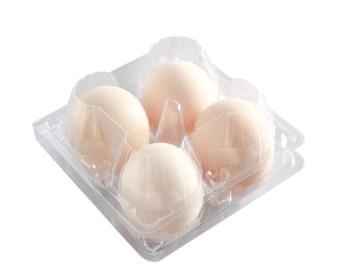The journey of a plastic egg tray from concept to creation is a fascinating exploration of modern manufacturing techniques. Plastic egg tray suppliers, who are the backbone of this industry, employ a series of meticulous processes to ensure the quality, durability, and functionality of their products. This article delves into the intricate world of plastic egg tray production, highlighting the steps taken by suppliers to meet the demands of the market.
The production process begins with the selection of raw materials. Plastic egg tray suppliers carefully choose high-quality, food-grade plastic resins that are safe for use in the food industry. These resins are selected based on their properties such as durability, flexibility, and resistance to temperature fluctuations. The choice of material is crucial as it directly impacts the performance and safety of the final product.
Once the raw materials are selected, they are transported to the production facility where they undergo a series of preparatory processes. The plastic resins are first melted in large industrial machines, which are designed to heat the material evenly and to the precise temperature required for molding. This step is critical as it ensures the plastic is in a state that can be easily shaped and molded into the desired form.
Following the melting process, the molten plastic is then injected into molds that have been specifically designed to create the egg tray's shape and structure. The molds are precision-engineered to ensure that each tray produced is uniform in size and design. The injection molding process is highly automated, with machines controlled by sophisticated software that monitors and adjusts the process to maintain consistency and quality.
After the molding process, the plastic egg trays are allowed to cool and solidify. This cooling phase is essential as it ensures the trays maintain their shape and structure once removed from the molds. The cooling process is carefully controlled to prevent any warping or distortion that could affect the trays' performance.
Once the trays have cooled and solidified, they are removed from the molds and undergo a series of quality control checks. Plastic egg tray suppliers place a high emphasis on quality assurance, employing rigorous testing methods to ensure each tray meets the required standards. These tests may include visual inspections, dimensional checks, and durability tests to ensure the trays can withstand the rigors of handling and transportation.
In addition to quality control, plastic egg tray suppliers also focus on the efficiency of their production processes. The use of advanced machinery and automation technologies allows for high-volume production, meeting the demands of a competitive market. Plastic Egg Tray Suppliers are constantly investing in research and development to improve their production techniques, reduce waste, and lower production costs.
The final stage of the production process involves packaging and shipping. Plastic egg tray suppliers package their products in a manner that ensures they are protected during transit and are ready for distribution. The packaging materials are chosen based on their ability to provide protection and ease of handling, further enhancing the customer's experience.
In conclusion, the production process of plastic egg tray suppliers is a testament to the precision, quality, and innovation that drives the industry. From the careful selection of raw materials to the intricate molding process, and rigorous quality control checks to efficient packaging and shipping, every step is designed to deliver a product that meets the highest standards of the market. As the demand for plastic egg trays continues to grow, Plastic Egg Tray Suppliers are poised to meet these challenges with a commitment to excellence in every aspect of their production processes.

